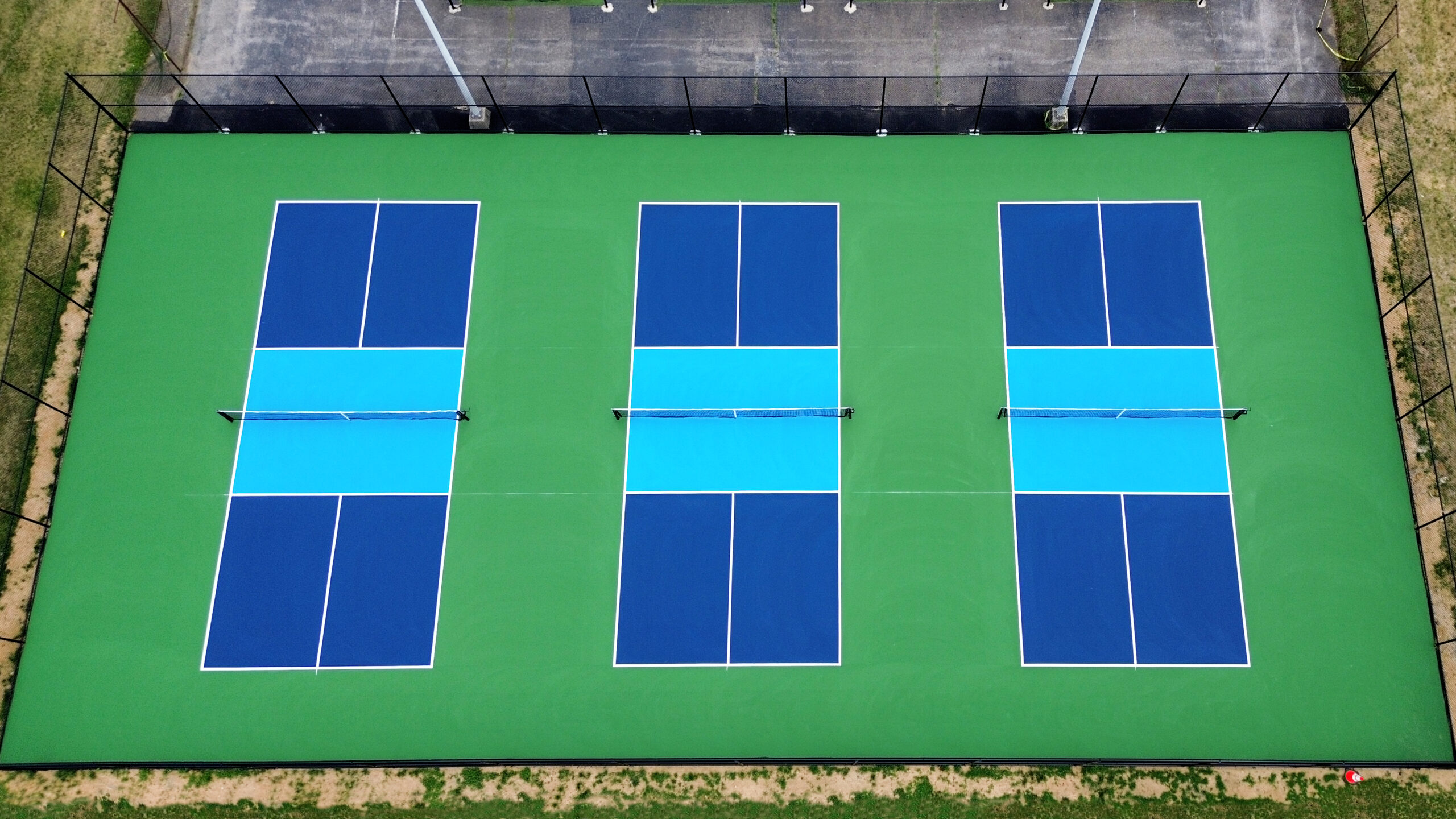Lasting Practices in Pickleball Court Building And Construction You Should Know
As the appeal of pickleball continues to rise, so as well does the requirement for lasting practices in court building. The influence of these methods expands far past the court itself.
Picking Eco-Friendly Materials
Picking environmentally friendly products is an essential action in the construction of sustainable pickleball courts. The option of lasting products not only minimizes environmental effect yet also enhances the long life and efficiency of the court. Trick products consist of recycled rubber for the surface area, which provides outstanding durability and shock absorption while diverting waste from landfills.
Additionally, utilizing in your area sourced products decreases transport discharges and supports regional economies. Pickleball court construction. For instance, making use of native woods for fence and seating can offer a sustainable aesthetic while guaranteeing durability against the elements.
Incorporating absorptive materials for court structures can additionally add to sustainability by permitting all-natural water drainage and lowering runoff. These selections not only safeguard neighborhood ecological communities however also advertise much healthier play atmospheres.
Efficient Drain Solutions
While the selection of environment-friendly products is important, executing reliable drainage services is similarly essential for preserving lasting pickleball courts. Proper drain not just safeguards the court surface from water damage yet also reduces disintegration and overflow, advertising ecological honesty.
Effective drainage systems can include absorptive paving, which permits water to penetrate the ground instead than merging on the surface area. This decreases the likelihood of standing water, which can cause mold and mildew and various other maintenance problems. Additionally, incorporating strategically placed water drainage channels and swales can direct excess water far from the court area, guaranteeing a dry having fun surface area and protecting against dirt disintegration.
Utilizing native plant life in the landscaping around the courts can further improve drain by absorbing excess water and reducing drainage. These plants need less watering and promote biodiversity, aligning with lasting methods.
Additionally, it is essential to on a regular basis maintain the drainage system to guarantee its long-lasting performance. This consists of clearing up debris and surveillance for blockages. By focusing on efficient drain solutions, pickleball court manufacturers can dramatically add to the sustainability and longevity of the facility, eventually benefiting both players and the environment.
Energy-Efficient Lighting Options
As the demand for pickleball remains to expand, integrating energy-efficient lighting choices right into court design has actually come to be progressively vital for sustainability. Traditional lighting systems typically eat too much power, adding to greater operational prices and ecological influence. For that reason, embracing contemporary, energy-efficient innovations is essential for both new constructions and remodellings.
LED (Light Emitting Diode) lighting attracts attention as a top option because of its longevity and power cost savings (Pickleball court construction). Compared to conventional lights, LEDs use about 75% less power and can last as much as 25 times longer, dramatically reducing maintenance costs. The directional nature of LED lights lessens light pollution, making certain that illumination is concentrated on the court instead than surrounding areas.

Sustainable Surface Alternatives
Exploring lasting surface area alternatives for pickleball courts has obtained grip among gamers and builders alike. The emphasis on environment-friendly products not only straightens with the expanding ecological awareness however likewise improves the efficiency and longevity of the courts.
One popular alternative is making use of recycled rubber, which can be sourced from used tires. This material offers superb shock absorption, decreasing the risk of injuries for players while promoting sustainability. Additionally, modular tiles made from recycled plastics offer another viable choice. These tiles are simple to change and mount, and their convenience permits for different court arrangements.
Natural yard courts are also emerging as a lasting choice, advertising biodiversity and reducing the warm island result. However, they need normal upkeep and water, which may not line up with all sustainability objectives.

Water Conservation Strategies

One more efficient technique entails the installment of rain harvesting systems. These visit the site systems collect and keep rainwater for usage in keeping court surfaces and landscaping. This strategy not just saves potable water but also decreases reliance on local sources.
Moreover, employing drought-resistant landscape design around the courts is vital. Indigenous plants need less water and are much better adapted to regional climate problems, thus decreasing general water consumption. In addition, utilizing effective irrigation systems, such as drip watering, ensures that water is delivered directly to plant origins, my link decreasing evaporation and waste.
Conclusion
Integrating lasting techniques in pickleball court building and construction considerably contributes to environmental conservation and source effectiveness. Using environment-friendly materials, executing effective drainage remedies, and taking on energy-efficient illumination options can greatly lower eco-friendly effect. Additionally, discovering sustainable surface options and employing water preservation techniques enhance the general sustainability of these leisure facilities - Pickleball court construction. By focusing on these methods, the construction of pickleball courts can line up with wider ecological objectives while promoting long life and functionality within areas.
As the appeal of pickleball continues to rise, so as well does the need for sustainable techniques in court building and construction.Choosing environment-friendly products is a vital action in the building and construction of lasting pickleball courts. By focusing on energy-efficient lighting options, pickleball court contractors can contribute to a more sustainable future while meeting the needs of players and stakeholders alike.Including lasting surface area options not only improves the performance of pickleball courts but also paves the method for implementing efficient water conservation strategies.Integrating lasting practices in pickleball court construction significantly adds to environmental conservation and resource performance.